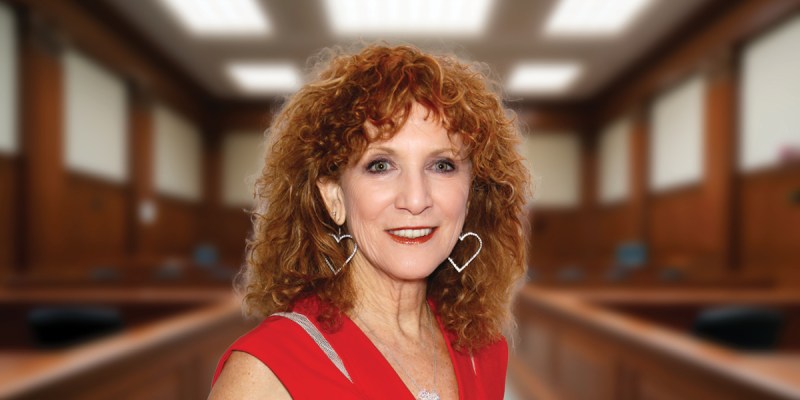But the bulletin board inside the United…
By Alex Davidson
Few people would think that a simple 3-foot-by 3-foot cork bulletin board and the church in which it hangs could hold the past, chronicle the present and forecast the futures of Richmond Hill and Ozone Park.
But the bulletin board inside the United Presbyterian Church of Ozone Park showing the congregation’s declining number of older white, Italian and German members beside its growing Indo-Guyanese and Trinidadian population is an accurate portrayal of the changes taking place in the two neighborhoods.
As is the variety of groups that use empty space within the church and its adjacent building to practice their own interpretations of the Christian faith. They include Indian, Taiwanese, Korean, Hispanic and even Gypsy congregations.
“The old way of doing things wears out,” said Pastor Richie Kusterbeck, who grew up in southeast Queens and now leads the 137-year-old Presbyterian church. “I think we are a redeveloping congregation.”
But a redevelopment plan initiated by Kusterbeck to welcome new arrivals to America into the church was not the congregation’s initial response to the growing immigrant populations in Richmond Hill and Ozone Park.
Kusterbeck said his church, originally the Woodhaven First Presbyterian Church, was founded by a group of women who led a predominantly German, Dutch and Scottish following. The church’s membership continued to thrive from the early part of the 20th century through the 1950s, when in its heyday more than 600 members and their families would regularly attend church services, he said.
With the further development of the Long Island Rail Road in the area and the increasing influx of Italians immigrants beginning in the 1920s, Kusterbeck said the neighborhood began to change — and with those changes came fewer and fewer members.
“This was a very powerful church at one time,” he said.
As the church’s membership declined, however, the number of immigrants climbed. Kusterbeck said people starting arriving in Richmond Hill and Ozone Park from Guyana, Trinidad, India and Mexico in the 1960s.
From that point through 1990, the church lost a majority of its members who decided to leave their longtime neighborhoods for Long Island, other New York City suburbs and Pennsylvania, Kusterbeck said. In addition, the children of existing members decided not to stay in Queens and instead went outside the borough for college and then to live.
He said so many people had left that by 1990 the church had only 50 members, excluding spouses and other relatives, and nearly closed.
While this was happening, many news immigrants in Richmond Hill and Ozone Park were taking the place of the former white residents who were the backbone of the Presbyterian church, Kusterbeck said.
Between 1980 and 1990, according to U.S. Census Bureau statistics, the number of Asians in Community District 9 increased by 274.9 percent, while the number of Hispanics rose 86 percent. The white population dropped by 25 percent during the same years, from 88,737 people to 66,556 people.
Community District 9 includes the communities of Woodhaven, Richmond Hill and Ozone Park.
Despite the dramatic change in demographics, Kusterbeck said the church did not extend an invitation to the new immigrants to join and suffered the almost crippling decline in its membership.
By 1986, some members of the congregation decided something had to change.
That year Gird Harry Kissoon became the first Guyanese pastor of the United Presbyterian Church of Ozone Park. But that attempt to reach out to the immigrants in the locale faced some opposition.
“There was a tension because of the change in ethnic composition,” Kusterbeck said.
But with the appointment in 1991 of Douglas Grandgeorge came a re-examination of the church, its members and its surroundings, Kusterbeck said. He said Grandgeorge was able to convince the older members in the congregation to embrace the area’s new immigrants.
“That has been a most significant change,” said Kusterbeck of his church that has had more than 20,000 services since its inception.
By the time Kusterbeck was named pastor in 1996, he said 60 percent of his congregation had been transformed in just a few years from an older white population to a younger, immigrant population with a majority of people from Guyana and Trinidad. There are also Hispanics and Filipinos in the congregation.
Community leaders in the Guyanese community estimate the number of immigrants coming from West Indian and Caribbean countries is at or above 100,000 — most of whom live in Richmond Hill. In the 2000 census, statistics show that the number of Asians and Hispanics continue to grow along with the dwindling white population.
This change prompted Kusterbeck and the rest of his congregation to rent out empty space in the church’s buildings to other ethnic communities as a way to both increase revenue and encourage others to practice Christianity.
Theses moves, he said, have saved the church and allowed it much needed time to adjust to its new environment. It has also brought in new, permanent members, who now number 100 people , along with 150 “adherents,” or irregular members.
And with that change has come a change on the bulletin board highlighting the church’s membership.
At the top, under the category called “new” are the Guyanese and Trinidadian members Kusterbeck hopes will become the backbone of his congregation. In the middle are the middle-aged white couples listed under the category “recent old timers.” Finally, at the bottom, are the “real old timers,” all older, mostly single white people.
“In the meantime, we have been trying to figure out what our role is,” said Kusterbeck while strolling in front of a stained glass window where the Taiwanese congregation stores its Bibles.
Reach reporter Alex Davidson by e-mail at TimesLedger@aol.com or by phone at 718-229-0300, Ext. 156

































